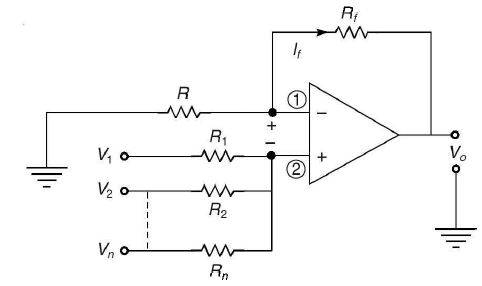Electrical Engineering ⇒ Topic : Non-inverting mode
|
|
| Peter
| |
Non-inverting mode In non-inverting mode, the produced output is a linear combination of inputs without a change of sign. The circuit is shown in Figure (a). figure (a) The output voltage Vo, in terms of R, Rf and V'i can be expressed as: From Figure (a), V'i, is the summation of voltages contributed by V1, V2, , Vn. The voltage contributed by V1 can be obtained by using superposition theorem. The contribution to V'i, due to V1 is V'i1 = V1Rp1/(R1 + Rp1)], where Rp1 is the equivalent resistance ofparallel combination of resistances R2, R3..... R. If R1= R2 = = Rn = R', Rp1 = R'I(n -1).
Therefore, the contribution to V'i due to V1,V2,........,Vn can be written as: Using Eq. (3), Eq. (1) can be written as:
The circuit becomes non-inverting summing amplifier. | |
|
| |
!! OOPS Login [Click here] is required for more results / answer


 ............. (1)
............. (1) ........... (2)
........... (2) .............. (3)
.............. (3) ............ (4)
............ (4)